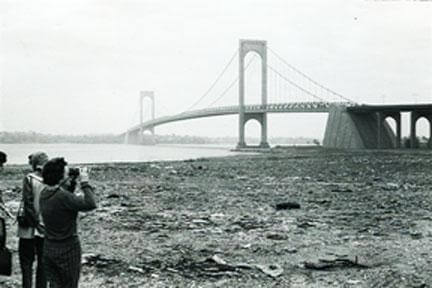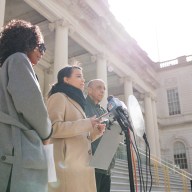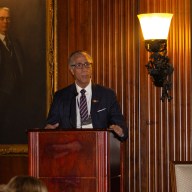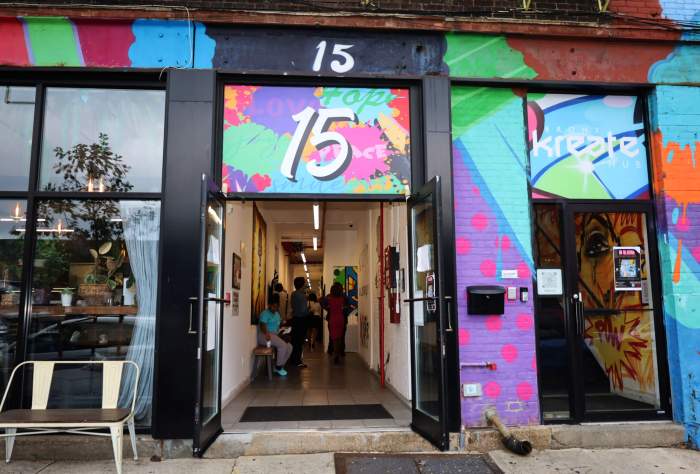Thinking about John McNamara last week reminded me that he was in a group that walked over the Bronx-Whitestone Bridge when it opened on April 29, 1939. They were able to use one of the two pedestrian walkways. When it was discovered that the bridge was oscillating a little too much in the 1940s, stabilizing trusses were added at which time the walkways were removed and the traffic lanes widened.
The new bridge negated the need for the municipal ferry that ran between Clason Point and College Point, Queens. It ceased operation at 1 p.m. on the date the bridge opened and resulted in a loss of business for the Fuellner Farm as traffic to the ferry was very often backed up for quite a distance allowing the Fuellner children to sell their fruit and produce from car to car along Soundview Avenue. Traffic was so bad sometimes that some people opted to use the trolley that ran to the ferry beginning circa 1910. This, however, was generally only a good option if your final destination was the amusement park at College Point.
The Bronx-Whitestone Bridge was designed by Othmar Ammann, the Swiss engineer, and was the brain-child of Robert Moses. Moses was also chairman of the 1939-1940 World’s Fair and wanted the bridge built in time to facilitate traveling from Westchester County and other northern areas to the fair. What Moses wanted, he generally got, so the bridge was completed well ahead of schedule and just one day before the World’s Fair opened. Opposition from those losing their homes in the exclusive area of Malba, Queens would probably side-track the project today, but in 1939 Moses dictated the terms and was not easily deterred.
The Bronx side of the bridge was also somewhat affected with the loss of some of the small farms in Ferry Point as well as disruptions caused by the southerly extension of the Hutchinson River Parkway to the bridge. Appleton Avenue and the old Pelham Road were eliminated as was Ferris Avenue. The parkway also separated the property of St. Joseph’s School for the Deaf necessitating the creation of a tunnel and tramway to access their laundry facilities, etc. now on the west side of the parkway. An overpass was later built which also facilitated travel to those attending St. Helena’s High School.
Construction of the bridge started on June 1, 1937 and it was completed on April 29, 1939. The actual length of the bridge itself was 7,140 feet including the approaches. The cost was $19,657,000 which doesn’t seem like much today but was a considerable sum in the 1930s. It carries about 110,000 cars a day which is quite a difference from its first full year in operation, 1940, at which time it carried only 17,000 vehicles per day. I wonder what that first group to walk over the bridge in 1939 would think about these numbers.























